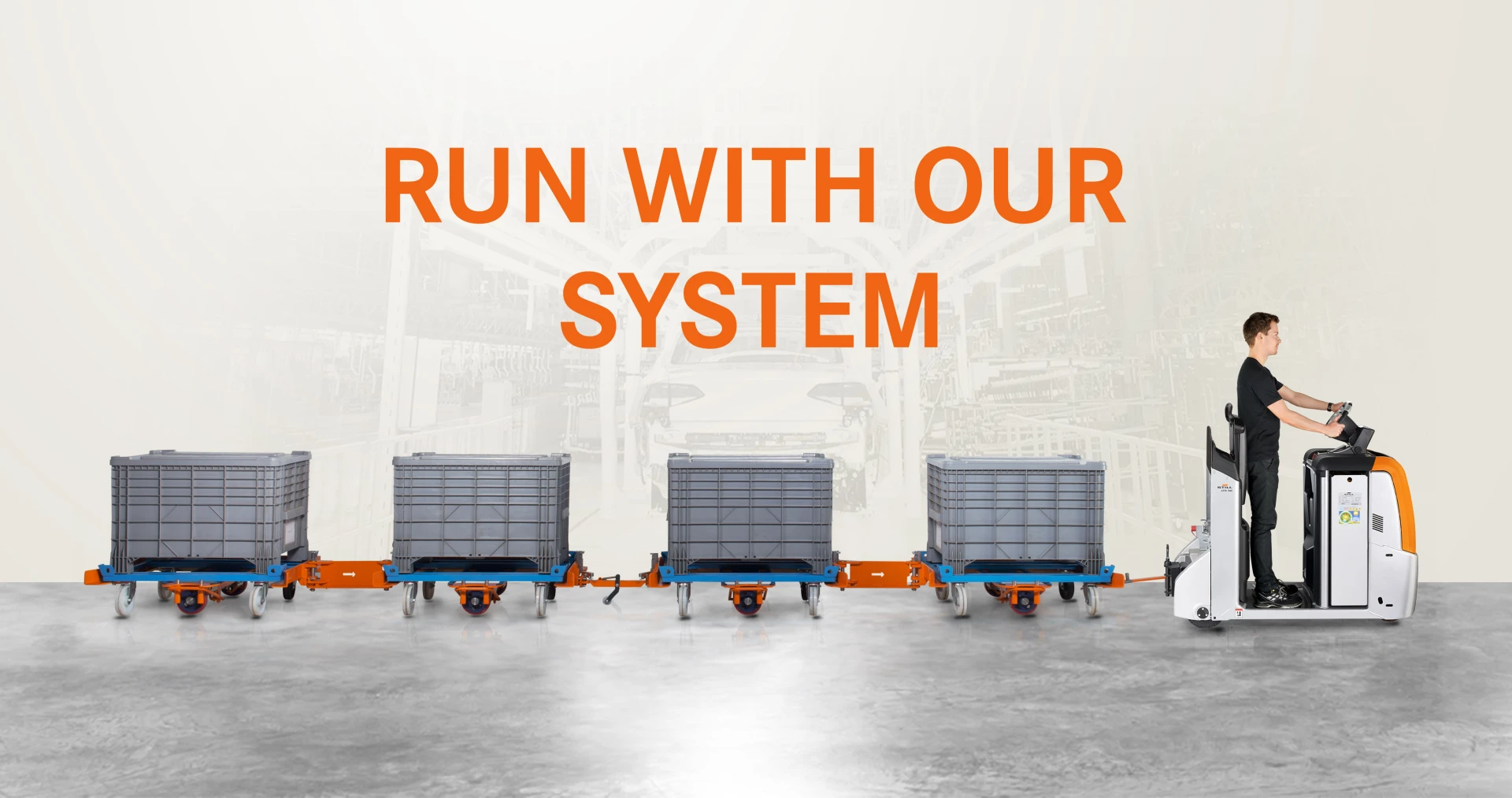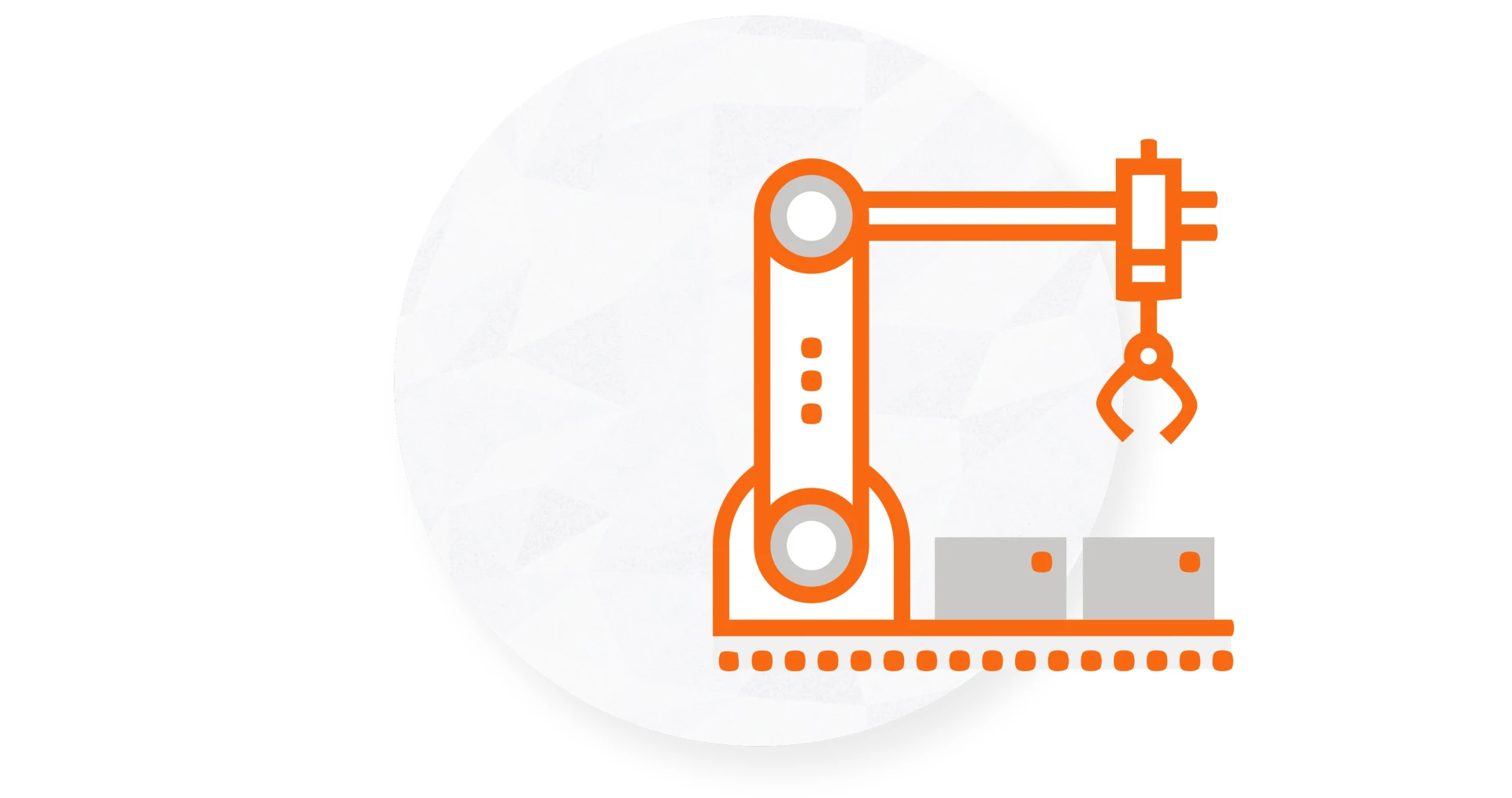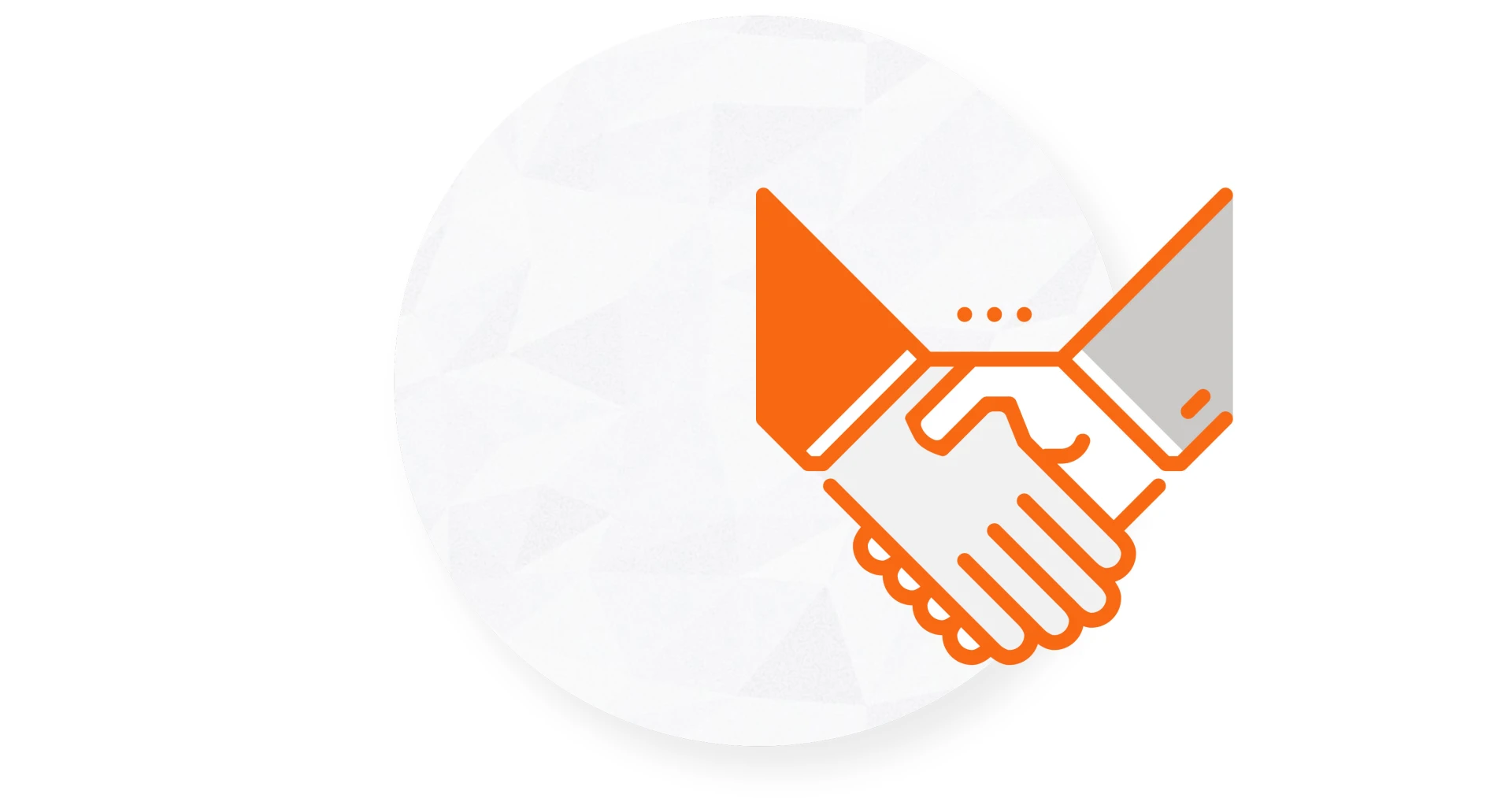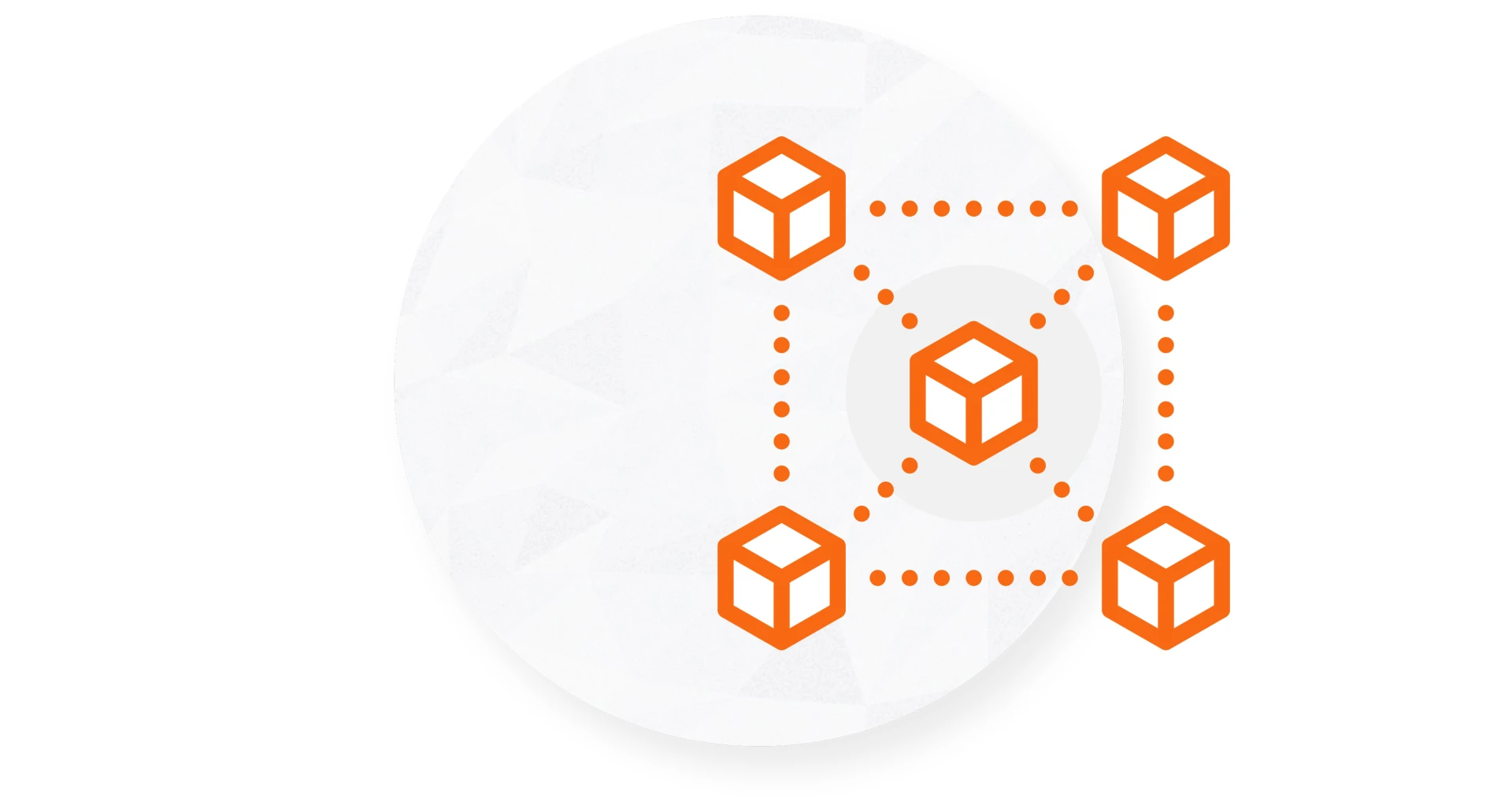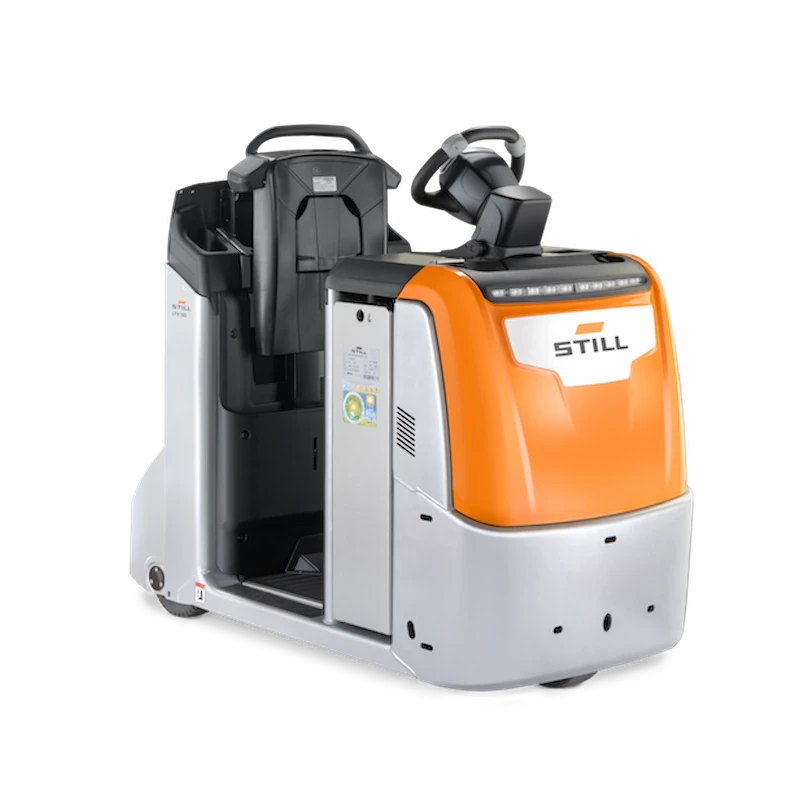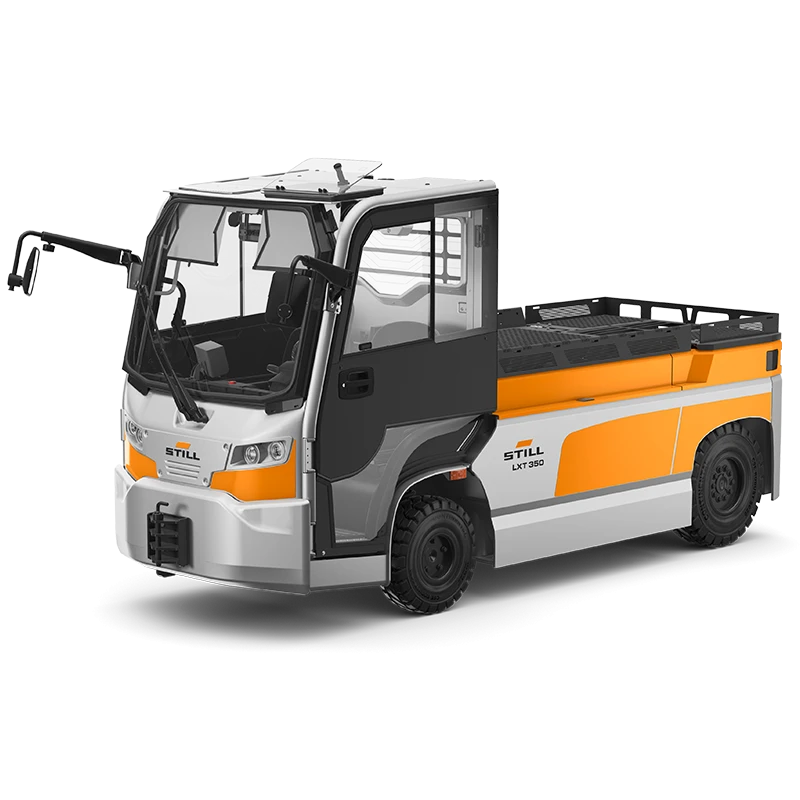
Components and functionality of tugger trains
The basic features of a tugger train
Tugger trains are a means of transport for ground-level material transport. They are generally made up of a towing truck and one or more trailers, on which carriers are placed. Both the driving and load handling can be carried out either manually or partly or fully automatically.
An important advantage of the tugger train is its efficiency, as one journey can be used to supply and dispose of different materials to different locations.

Tugger trains with the trailer concept have been in use in non-production areas (e.g. airports, stations, logistics) for a long time. They are also currently being used for to supply production lines, where they supply the production process as required.
Other areas of use for tugger trains include all types of internal transport, wherever goods are regularly being picked up and/or taken away.
Tugger trains with push systems comprise a towing truck and several trailers, which in turn carry the carriers or trolleys.
Towing trucks
Standard tow tractors can be used as the towing truck, from simple standing tow tractors to automated electric tow tractors.
How to select the right towing truck:
- Long distance - with driver's seat
- Frequent stops - with standing area
- Infrequent stops or short distance - with standing or sitting area
- Route is outside - with driver's seat with speed limit removed

Trailers / Frames
There is a wide range of push trailers available and there is still no standard variant among them. Your individual requirements determine whether you need an E, C, U, H or B-Frame. A tugger train can pull multiple trailers, which can include a combination of different trailer types. The type of trailer required depends on the size and weight of the load and on the environment in which it is being used.

E-Frames
- Loading and unloading can take place on only one side
- Goods of various sizes can be transported
- Requires highly complex route planning
- Runs pneumatically, hydraulically, electrically or self-sufficiently
- Low to medium maintenance requirements for the trailers (aside from the drive, rollers and any special installations)
- Trolley required
independent E-Frames, which generate the energy needed for the lifting motion during the journey with no external energy supply, are used with the STILL LiftRunner, for example.
C-Frames
- Great potential for customisation
- Heavy weights possible
- Loading and unloading only on one side
- Goods of various sizes can be transported
- Low to medium maintenance requirements for the trailers


B-Frames
- Goods can be loaded and unloaded on either side
- Goods of various sizes can be transported
- Dynamic route planning
- Trolleys required
- Energy supply (varies according to manufacturer): pneumatic, hydraulic or electric
H-Frames
- Can be loaded on both sides; the loading side determines the unloading side
- Size of the goods being transported must be uniform
- Limited complexity of route planning
- Low maintenance required for trailers
U-Frames
- Goods can be loaded and unloaded on either side
- Goods of different or uniform sizes can be transported depending on manufacturer
- Little room for manoeuvre in route planning

Trolleys
Trolleys are also called floor rollers or push carts. They are the carriers for the materials being transported. There are various types available for different materials, from small load carriers to large load carriers. Trolleys are often designed for transport with specific trailers. As a rule, loading and unloading of trailers still happens manually, but certain systems support automatic load handling.
The diverse expansion options mean that there many different carriers available. There are various attachments for the trolleys that can be used according to the type and dimensions of the goods. This includes support pallets, an additional support for load distribution in the form of a packing plate that can be fitted to the trolley, boxes and screw shelves and tilting functions (like those made by STILL).
The tugger train travels along a defined route and transports material from and to defined collection and delivery stations. Different goods can be loaded and unloaded at the same time, ensuring goods can be supplied and disposed of as required.
There are two possible routes: static and dynamic. Static routes work in a similar way to bus routes – the route is defined and is always completed according to an agreed timetable. Loading and unloading take place on one side. The dynamic route has variable routes and goods can be loaded and unloaded on both sides, ensuring greater flexibility.
Not all tugger trains are the same. One key difference is the type of trailer used.
Each trailer carries the load in a different way:
- Trailer concept: the load is placed directly onto the trailer
- Taxi concept: the carrier is pushed onto the trailer via a ramp attached to the side and taxied
- Push concept: the carrier is pushed onto the trailer
The concepts not only have technical differences but also vary in the effort and cost required to implement
and operate them. The important question to consider is why the tugger train is being implemented now and
how it must be designed to fit the company perspective.
The trailer concept is often used as a first step but can become problematic later if the company perspective favours the use of a push system. Trailer systems have long process and load handling times. They are relatively inflexible, cannot be combined with digital information systems and even in low quantities are very cost-intensive.
Push systems, in contrast, are flexible and can be used as a foundation for digitalising and automating the material flow.
STILL offers different tugger train systems depending on the environment in which it will be used.
This includes various combinations of towing vehicles, trailers and trolleys as well as different basic concepts and trailer systems.
The trailers can be coupled and operated hydraulically, electrically, pneumatically or, in the simplest variant, self-sufficiently.
The bedrock of the STILL tugger train system is the STILL LiftRunner. The system has been setting standards in the market for 10 years.
Summary: Tugger trains are towing vehicles with several trailers. They drive defined routes and transport material from and to defined collection and delivery stations.
Your expert advisor will be happy to answer any questions you may have about your tugger train introduction. Call us or arrange a callback.
Request to: Components and functionality of tugger trains
Your expert advisor will be happy to answer any questions you may have about your tugger train introduction. Call us or arrange a callback.

